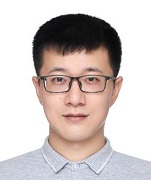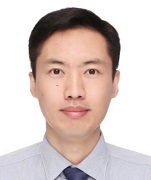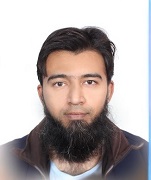Special Session: Integrated Sensing and Communications for Internet of Things
The integration of radar/sensing with communications, heralded as a new frontier in information technology by the communications and signal processing communities, has sparked a plethora of cutting-edge applications. Known as Integrated Sensing and Communication (ISAC), this research trend can be realized through the synergistic design of shared spectral and hardware resources, employing strategies like cohabitation designs and dynamic spectrum allocation/access with interference management. ISAC's implementation can also adopt a co-design approach, enabling parallel operation with optimized performance. This emerging paradigm offers distinct advantages, including efficient resource utilization and balanced multi-functional performance, hinting at a potential future where dual-functional networks empower civilian services through sensing and tailored communication.
Related topics:
Submission Deadline: May 10, 2024
Notification: June 05, 2024
Registration: June 20, 2024
Submit Method:
1, submit it via the link: http://confsys.iconf.org/submission/icicsp24 (after entering the link, click on the corresponding topic)
2, send your manuscript to icicsp@vip.163.com with subject "Submit+Special Session-8+Paper Title". (请通过邮件发送稿件,邮件题目:Submit+Special Session-8+Paper Title)
CHAIRMANS:

Hongwen Yu received his B.Eng., M.Eng. and Ph.D. degree in communication and information engineering from Shanghai University, Shanghai, China, in 2011, 2014 and 2020, respectively, and his Ph.D. degree in electronic engineering from the University of Technology Sydney, NSW, Australia in 2022. Currently, he is an Associate Professor in the Department of Communication and Information Engineering, Shanghai University. His research interests include reconfigurable intelligent surface, mmWave communications and B5G/6G wireless communications.

Zhichao Sheng received the Ph.D. degree in electrical engineering from the University of Technology Sydney, Sydney, NSW, Australia, in 2018. From 2018 to 2019, he was a Research Fellow with the School of Electronics, Electrical Engineering and Computer Science, Queen’s University Belfast, Belfast, U.K. Currently he is an Associate Professor with Shanghai University, Shanghai, China. His research interests include optimization methods for wireless communication and signal processing. He was an Exemplary Reviewer of the IEEE Wireless Communications Letters in 2022

Ali Arshad Nasir received the Ph.D. degree in telecommunications engineering from Australian National University (ANU), Australia, in 2013. From 2012 to 2015, he worked as a Research Fellow at ANU. From 2015 to 2016, he was an Assistant Professor with the School of Electrical Engineering and Computer Science (SEECS), National University of Sciences and Technology (NUST), Pakistan. In 2016, he joined the Department of Electrical Engineering at King Fahd University of Petroleum and Minerals (KFUPM), Saudi Arabia, where he is currently working as an Associate Professor. His research interests are in the area of signal processing in wireless communication systems.

Dr. Antonino Masaracchia received the Ph.D. degree in electronics and telecommunications engineering from the University of Palermo, Italy, in 2016. His Ph.D. studies were conducted in joint supervision with the Institute of Informatics and Telematics (IIT), National Research Council (CNR), Pisa, Italy, and the obtained results have been important contributions from IIT to the FP7 MOTO European Project. Since September 2018, he conducts research activities as Research Fellow at the Centre for Wireless Innovation, Queens University Belfast, U.K. He has been awarded with the seal of excellence for the project proposal UAV-SURE and UAV-DRESS submitted under the Horizon 2020s Marie Skodowska-Curie actions call H2020-MSCA-IF-2020 (September 2020), and Horizon Europe Marie Skodowska-Curie Actions call HORIZON-MSCA-2021-PF-01-01 MSCA Postdoctoral Fellowships (October 2021), respectively. In 2022 he received the recognition of exemplary reviewer for IEEE Wireless Communications letters and in 2023 he received the Best Paper Award at the IEEE IWCMC 2023 conference and EAI INISCOM 2024 conference. At date, his research activities are mainly focused on optimal resource allocation for enabling URLLCs services in future 6G networks, as well as the investigation of innovative real-time optimization systems for future wireless networks by exploiting the recent concept of Digital Twin. latency communications (URLLC). He is currently serving as a Guest Editor for EAI Endorsed Transactions on Industrial Networks and Intelligent Systems. He served as Associate Editor for a section on Artificial Intelligence of Things published within Frontiers in the Internet of Things. He served as guest editor for Special Issue on Radio Frequency Energy Harvesting and Wireless Power Transfer published by Electronics (MDPI) for which he served also as a Topic Editor. He served as a Guest Editor for a Special Issue on Controls, Communications and Networking for Ad Hoc Mobile Sensor Networks published by ICSES Transactions on Computer Networks and Communications. He has served as a Guest Editor for a Special Issue on Reliable Communication for Emerging Wireless Networks published by Mobile Networks and Applications (ACM/Springer).
